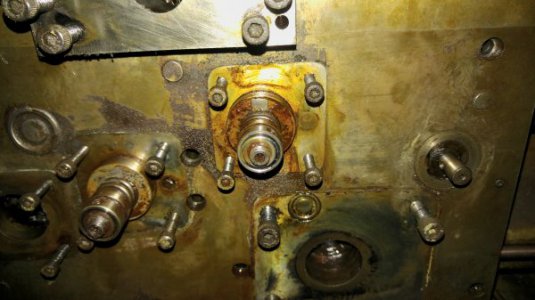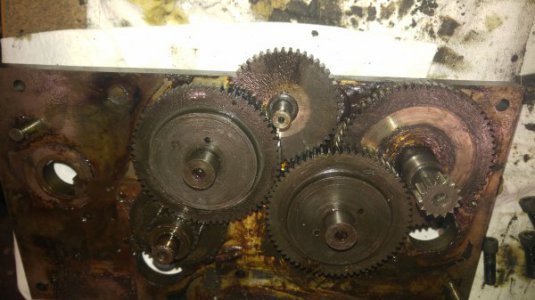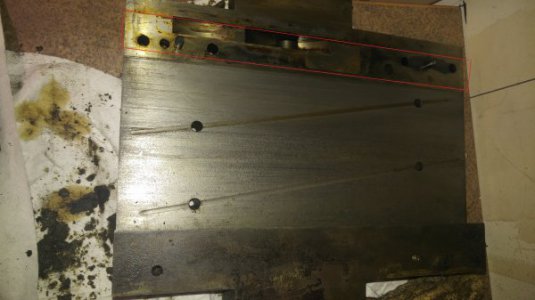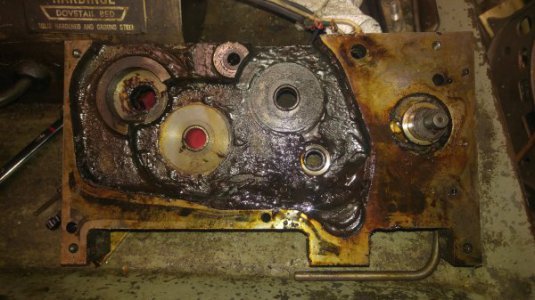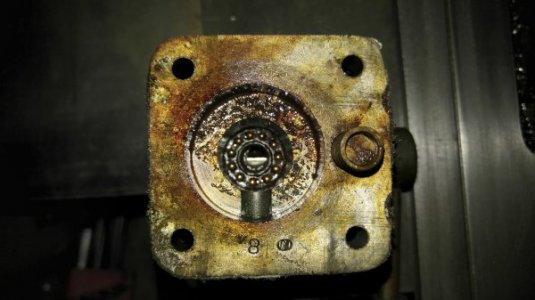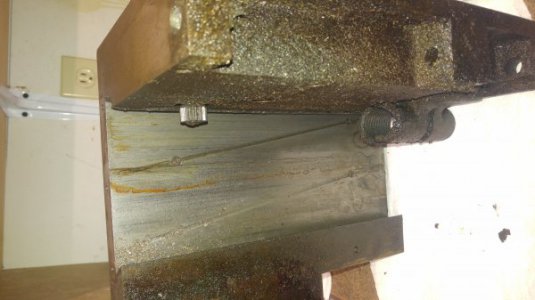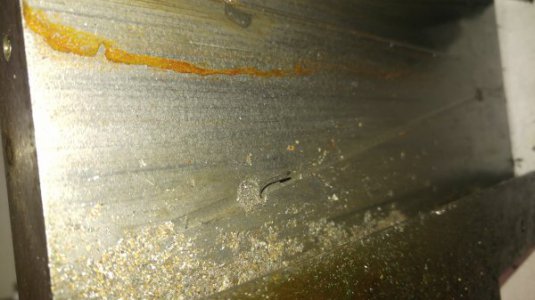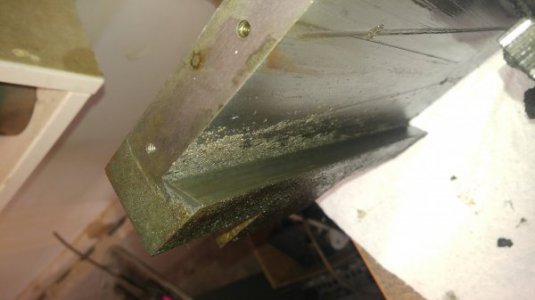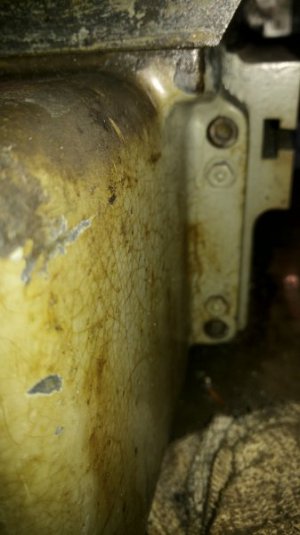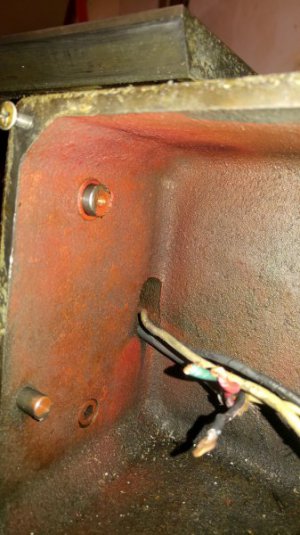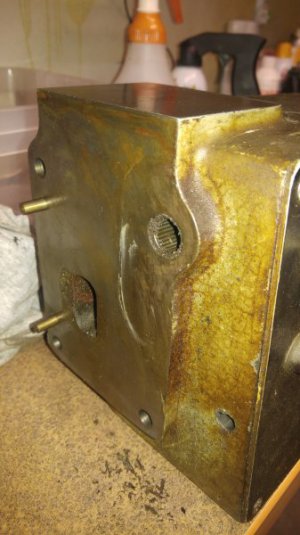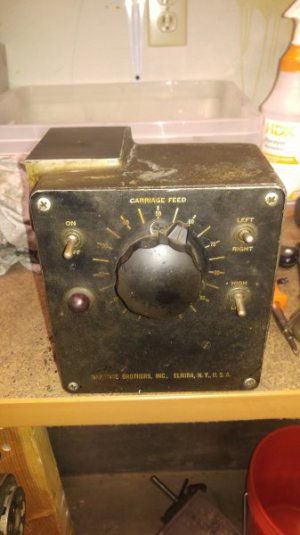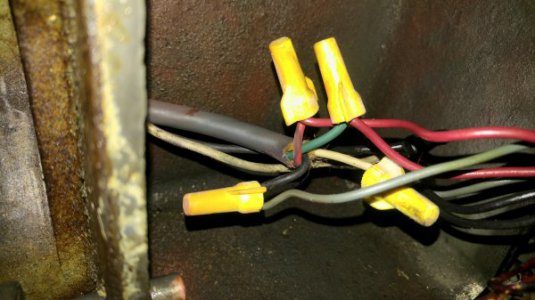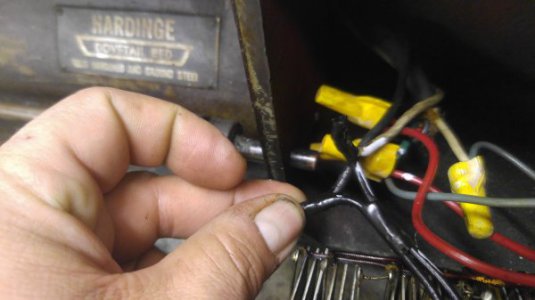Howdy,
In an effort to provide photographic (and possibly video - still learning to do that) record of the teardown and rebuild of an early HLV lathe, I'm going to devote a thread to my particular model. Note that my particular machine is so early, that it does not have an oiling system for the carriage, etc. Only oiling bungs (for point of reference).
The plan is roughly as follows:
1) teardown and decrustify the machine, and
2) rework, repaint and rebuild the machine to as close to factory spec as possible.
Unfortunately, I'm not really sure what the "factory spec" was for this machine, as real documentation is very scarce - whereas the HLV-H has pretty solid docs. So, I'm mostly going to shoot from the hip, and if you all have info please do share so I can build a library as comprehensive as possible.
I am going to take as many photos as possible during the course of this endeavor, which will probably last at least a couple months, if not more (depending on funds and what needs to be done).
Hopefully, by the end of it all, I'll be able to provide information on a machine which I've been unable to find a lot of documentation on - especially since it's one of the first (by my current knowledge, actually the third ever made) HLV lathes.
If you have any specific requests for things to see to help out in your HLV travels, please do let me know, and I'll do my best to accommodate via pictures. As a rule, I'm using the HLV-H maintenance manual, but I've already found some significant deviations from said manual, and I'll do my best to make note of them where applicable.
I'll start off with initial condition photos in the following posts, but for now, an overview (which I've posted elsewhere). I started with an initial thread in the bridgeport forum (as I also acquired one of those when I got this machine), but a couple of things lead me to separate them:
1) There really is a lack of information on this particular type (HLV) and vintage (very early) online
1a) All the manuals I've found are for newer HLVs (mid 1950's and up) or for the HLV-H (1960 and up). Mine is a strange beast
1b) She's extremely crusty and varnished, which leads to interesting exercises in disassembly
1c) I don't always have the proper tools, which leads to further interesting exercises in disassembly, we'll either fab up or hack our way around that
2) There is no support from Hardinge for this lathe, unlike the HLV-H.
3) I'm trying to restore the old girl to glory as cheaply as possible
4) My memory is terrible, so pictures help enormously - both now and in the future.
Pardon the kind of scattershot way I'm going about this, as this is my first real "major" project of this type, so I'm still wrapping my noodle around it and trying to figure out the best way to organize it all. If any of you have recommendations for better ways to approach it, let me know!
Regards,
Mike
An overview set:
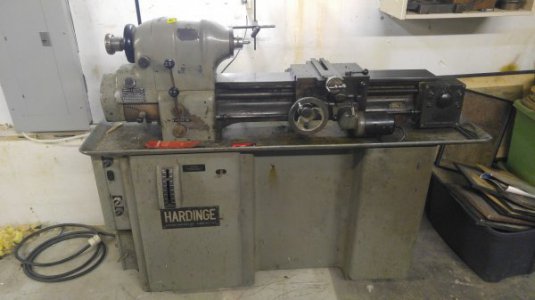
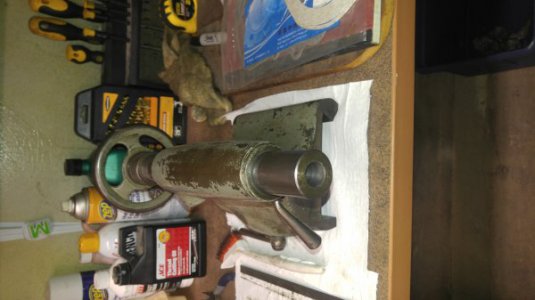
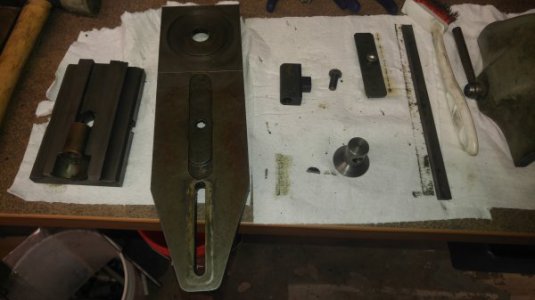
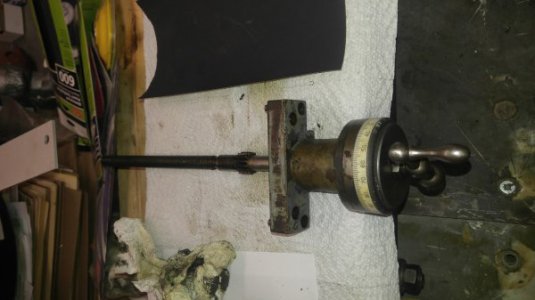
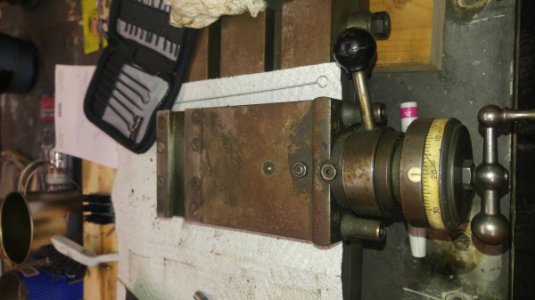
In an effort to provide photographic (and possibly video - still learning to do that) record of the teardown and rebuild of an early HLV lathe, I'm going to devote a thread to my particular model. Note that my particular machine is so early, that it does not have an oiling system for the carriage, etc. Only oiling bungs (for point of reference).
The plan is roughly as follows:
1) teardown and decrustify the machine, and
2) rework, repaint and rebuild the machine to as close to factory spec as possible.
Unfortunately, I'm not really sure what the "factory spec" was for this machine, as real documentation is very scarce - whereas the HLV-H has pretty solid docs. So, I'm mostly going to shoot from the hip, and if you all have info please do share so I can build a library as comprehensive as possible.
I am going to take as many photos as possible during the course of this endeavor, which will probably last at least a couple months, if not more (depending on funds and what needs to be done).
Hopefully, by the end of it all, I'll be able to provide information on a machine which I've been unable to find a lot of documentation on - especially since it's one of the first (by my current knowledge, actually the third ever made) HLV lathes.
If you have any specific requests for things to see to help out in your HLV travels, please do let me know, and I'll do my best to accommodate via pictures. As a rule, I'm using the HLV-H maintenance manual, but I've already found some significant deviations from said manual, and I'll do my best to make note of them where applicable.
I'll start off with initial condition photos in the following posts, but for now, an overview (which I've posted elsewhere). I started with an initial thread in the bridgeport forum (as I also acquired one of those when I got this machine), but a couple of things lead me to separate them:
1) There really is a lack of information on this particular type (HLV) and vintage (very early) online
1a) All the manuals I've found are for newer HLVs (mid 1950's and up) or for the HLV-H (1960 and up). Mine is a strange beast
1b) She's extremely crusty and varnished, which leads to interesting exercises in disassembly
1c) I don't always have the proper tools, which leads to further interesting exercises in disassembly, we'll either fab up or hack our way around that
2) There is no support from Hardinge for this lathe, unlike the HLV-H.
3) I'm trying to restore the old girl to glory as cheaply as possible
4) My memory is terrible, so pictures help enormously - both now and in the future.
Pardon the kind of scattershot way I'm going about this, as this is my first real "major" project of this type, so I'm still wrapping my noodle around it and trying to figure out the best way to organize it all. If any of you have recommendations for better ways to approach it, let me know!
Regards,
Mike
An overview set:






